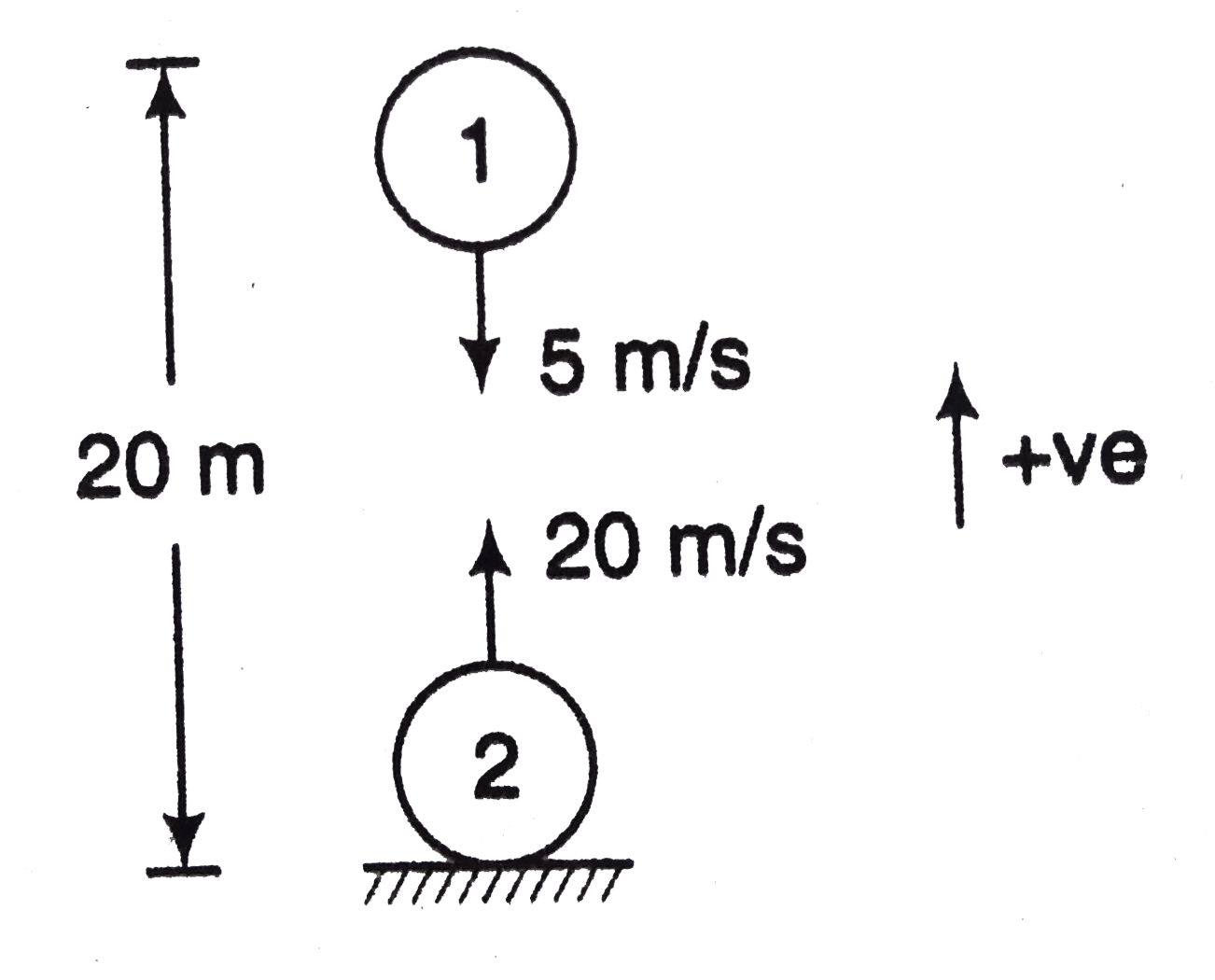Two particles A and B are projected simultaneously in the directins shown in figure with velocities respectively. They collide in air after s. Find
(a) the angle
(b) the distance x.
 .
.
The correct Answer is:A, B, C
(a) If they collide in air then relative velocity of A
with respect to B should be along AB or their
vertical components should be same.
or .
(b)
.
Topper's Solved these Questions
- PROJECTILE MOTIONBOOK - DC PANDEYCHAPTER - PROJECTILE MOTIONEXERCISE - Level - 2 Single Correct
10 Videos
- PROJECTILE MOTIONBOOK - DC PANDEYCHAPTER - PROJECTILE MOTIONEXERCISE - Level - 2 More Than One Correct
8 Videos
- PROJECTILE MOTIONBOOK - DC PANDEYCHAPTER - PROJECTILE MOTIONEXERCISE - Level - 1 Single Correct
16 Videos
- MOTION IN A PLANEBOOK - DC PANDEYCHAPTER - MOTION IN A PLANEEXERCISE - (C )Medical entrances gallery
32 Videos
- PROPERTIES OF MATTERBOOK - DC PANDEYCHAPTER - PROPERTIES OF MATTEREXERCISE - Integer
8 Videos
Similar Questions
Two particles A and B of equal mass are projected simultaneously with speed 10 m/s each as shown in figure. Find the co-ordinate of COM at t=10 s
View SolutionTwo particles A and B of masses 1kg and 2kg respectively are projected in the directions shown in figure with speeds uA=200m/s and uB=50m/s. Initially they were 90m apart. They collide in mid air and stick with each other. Find the maximum height attained by the centre of mass of the particles. Assume acceleration due to gravity to be constant.
(g=10m/s2)

View Solution
Knowledge Check
Two particles A and B are projected simultaneously in the direction shown in the figure with velocities VA=20m/s and VB=10m/s respectively. If they collide in air after 1/2 sec. then
 Athe angle θ is 60∘Bthe distance x is 5√3mCthe angle θ is 30∘DThe distance x is 15√3m
Athe angle θ is 60∘Bthe distance x is 5√3mCthe angle θ is 30∘DThe distance x is 15√3mTwo particles A and B masses 1 kg and 2 kg respectivelty are projected in the same vertical line as shown in figure with speeds uA=200m/s and uB=85m/s respectively. Initially they were 90 m apart. Find the maximum height attained by the centre of mass of the system of particles A and B, from the initial position of centre of mass of the system. Assume that none of these particles collides with the ground in that duration Take g=10m/s2
 A5 meterB10 meterC25 meterD20 meter
A5 meterB10 meterC25 meterD20 meterTwo particles A and B are projected simultaneously in horizontal direction with speed 50m/s and 100m/s respectively . If tAandtB are the time taken by the projectiles to hit the ground by the particles A and B respectively, then
AtA=tBBta>tBCtA<tBDInformation is insufficient to compare tAandtB.
Two particles A and B start at O travel in opposite directions along the circular path at constant speed vA=0.7m/s and vB=1.5m/s respectively. Determine the time when they collide and the magnitude of the acceleration of B just before this happening. (radius=5m)

View SolutionTwo particles 1 and 2 are thrown in the directions shown in figure simultaneously with velocities 5m/sand20m/s. Initially, particle 1 is at height 20 m from the ground. Taking upwards as the positive direction, find

(a) acceleration of 1 with respect to 2
(b) initial velocity of with respect to 1
(c) velocity of 1 with respect to 2 after time t=12s
(d) time when the particles will collide.
View SolutionTwo particles are projected with speed 4m/s and 3m/s simultaneously from same point as shown in the figure. Then:

View SolutionTwo particles are projected with speed 4m/s and 3m/s simultaneously from same point as shown in the figure. Then :

View SolutionTwo perfectly elastic particles A and B of equal masses travelling along a line joining them with velocities 15m/s and 10m/s respectively collide. Their velocities after the elastic collision will be (in m/s) respectively
View Solution
